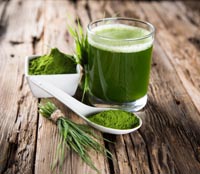Chlorella: Unlocking the Secrets of a Superfood
/Chlorella is a single-celled freshwater microalgae that has flourished for nearly two billion years. Photosynthesizing its energy from the sun, chlorella is a powerhouse of nutrients. It is a natural source of vegetarian protein—about 60 percent—a very high level for a plant. Due to this high protein concentration and chlorella’s naturally rapid growth rate, after World War II, chlorella was investigated as a possible food source.
Chlorella is rich in amino acids, antioxidants, vitamins, and minerals—including B-vitamins, vitamins A and D, iron, magnesium, potassium, and zinc. This unique combination of nutrients within chlorella is a primary reason why scientists around the world are actively researching* medicinal uses for this aquatic-based superfood.
Chlorella’s potential benefits for health and vitality include:
- detoxification from heavy metals, including mercury;
- supporting optimal immune system function;
- antioxidant properties;
- anti-inflammatory properties;
- healthy cholesterol metabolism; and
- support for digestive health.
It is widely accepted that the structure of the cell wall in chlorella allows it to bind with heavy metals, essentially keeping the phytonutrient healthy, and it’s the primary reason chlorella has survived for millennia, even in polluted aquatic environments. This rare ability to bind to toxins has given rise to preclinical studies on the role chlorella may play in detoxification for optimal health in humans, as our internal environment is primarily aquatic.
There are many types of chlorella on the market, in pill and powder form. The cellular properties of chlorella must be broken down for human digestion, known as “broken cell-wall chlorella.” Therefore, chlorella must be developed under careful quality control conditions. Additionally, Daily Values for this nutrient have not been established. It is imperative to consult with Dr. Bossio before selecting a chlorella supplement.
*(chemical assays, animal and limited human studies)
Resources
- Merchant, R.E., and C.A. Andre. “A Review of Recent Clinical Trials of the Nutritional Supplement Chlorella Pyrenoidosa in the Treatment of Fibromyalgia, Hypertension, and Ulcerative Colitis.” Abstract. Alternative Therapies in Health and Medicine 7, no. 3 (May-June 2001): 79-91.
- Sample of studies indexed in PubMed database for “chlorella supplementation”
- Wu, Y., and W.X. Wang. “Intracellular Speciation and Transformation of Inorganic Mercury in Marine Phytoplankton.” Abstract. Aquatic Toxicology 148 (March 2014):122-9.
Image Attribution: Kesu01/bigstock.com

